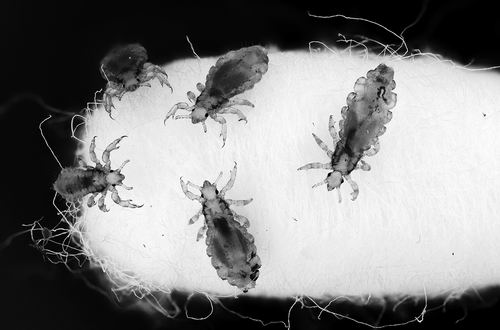
A little-known cousin of Lyme disease today, relapsing fever was once the scourge of early civilizations. Caused by the bacterium Borrelia borrelia, the disease causes severe headaches and recurring high fevers that, if left untreated, can damage organs and even cause death. Like other diseases that plagued the ancient world, such as leprosy and plague, it was thought to have jumped from animals to humans at the dawn of agriculture and domestication about 11,000 years ago.
A paper published in Science on May 22 traces the bacteria's tortuous evolutionary history and suggests that relapsing fever actually became prevalent during the advent of metal tools in the Bronze Age. Evidence from ancient bacterial genomes suggests that about 5,000 years ago, perhaps when Europeans began wearing wool clothing, the pathogen changed from a generalist pathogen spread among mammals by ticks to a specialized pathogen spread exclusively by human lice.

The bacteria that causes relapsing fever are spread by human lice. Photo credit: TOMASZ KLEJDYSZ/SHUTTERSTOCK
The study also shows that other diseases thought to be associated with the origins of agriculture actually began to emerge thousands of years later, when populations became increasingly dense and people made greater use of "minor" animal products such as dairy and wool. Although humans have been herding for thousands of years, "the Bronze Age brought people into closer contact with domestic animals and their ectoparasites," explains co-author Pooja Swali, an archaeogeneticist at University College London.
To explore the origin of the disease, Swali's team searched for Borrelia genes in an ancient DNA database of hundreds of remains in the UK over the past 5,000 years. When a patient dies, the bacteria in the blood will leave traces of DNA in the roots of the teeth. They detected relapsing fever Borrelia from some ancient human tooth samples, which is homologous to the bacteria that cause Lyme disease. After resampling, the researchers successfully restored and reconstructed four bacterial genomes dating back 2,300 to 600 years. "The depth of sequencing they achieved is amazing," said Charlotte Houldcroft, a virologist at the University of Cambridge in the UK.
By comparing ancient human tooth samples from different periods, Swali's team depicted the evolution and reduction of the genome of Borrelia relapsing over time. Looking back, the bacteria diverged from its tick-borne ancestors about 6,000 years ago. Then, about 5,000 years ago, as it adapted to infect humans only through body lice, it began to lose common genes. "They are adapting to humans and lice hosts at the same time." Kevin Daly, a geneticist at the University of Dublin in Ireland, pointed out, "It's shocking to observe this process in real time."
The discovery corroborates an unpublished preprint study by Martin Sikora, a geneticist at the University of Copenhagen in Denmark, published in 2023. After screening more than a thousand ancient European genomes over the past 37,000 years, Sikora's team found that about 5,000 years ago, the infection rate of recurrent fever Borrelia surged. At the same time, leprosy and plague bacteria transmitted by animal hosts also increased significantly during this period-thousands of years later than many scholars believed.
This wave of disease occurred during an era of technological innovation, with the rise of metal tools and the spread of wool clothing. Swali points out that wool clothing provided a breeding ground for body lice to harbor, reproduce and spread from person to person, prompting the pathogen to evolve into a louse-borne disease.
It is not easy to disentangle the relationship between disease drivers, such as close contact with animals and intensive use of animal products, and the increase in population density during the same period. "It may be that urbanization or general agriculture, rather than intensive domestication, is driving this process," Daly said. "This is a question that the entire field is exploring."
The genetic changes that enabled bacteria to spread more efficiently 5,000 years ago raise alarm bells about traditional views of disease evolution. “The public has long believed that pathogens become milder over time, but now both ancient and modern data show that this is not the case,” Houldcroft said.
Related paper information: https://doi.org/10.1126/science.adr2147
(Original title: "Wool clothing 5,000 years ago promoted the spread of deadly diseases")
- UIUhkYMWgKUsb05/30/2025
- HHhoEkLRiHs05/29/2025